How To Stop Food Motivated Dog
To stop a food-motivated dog from obsessing over treats and ignoring commands, start by diversifying their rewards with toys like squeaky balls or quick games of tug, alongside verbal praise (“Good job!”) and gentle petting. This approach helps shift their focus from food to other incentives, keeping them engaged even in distracting environments. Stay tuned for more detailed strategies and tips on effectively managing their motivation later in the article.
Essential Facts in 30 Seconds
- Use non-food rewards like toys or playtime to divert attention from food during training.
- Offer verbal praise and affection as alternative motivators for positive behavior.
- Frequently rotate rewards to keep the dog engaged without depending only on treats.
- Play games such as fetch or tug to substitute food rewards with enjoyable activities.
- Establish a consistent routine to lessen food fixation and foster trust.
Understanding Food Motivation in Dogs
Food motivation in dogs is a fascinating topic to explore. It explains why dogs love food so much. Some dogs go crazy for sausage, not just any treat. This shows every dog has unique tastes.
Food isn’t just about filling their belly. It’s a strong way to change their behavior. Rewards like food work better than just saying “good boy.” Working for food can also provide dogs with a sense of agency and control.
Food also builds a bond with your pet. Feeding them creates trust and love between you. It helps in training too. Dogs learn quicker with yummy snacks as rewards.
But be careful with how much you give. Too much food can make them gain weight. Obesity is a real problem for dogs.
Pay attention to your dog’s needs. Some dogs want food more than others. Adjust the treats to keep them healthy. Balance is the key to good training.
Don’t depend only on snacks for rewards. Mix in play or kind words. This keeps your dog happy and fit.
Recognizing Signs of Reduced Food Interest
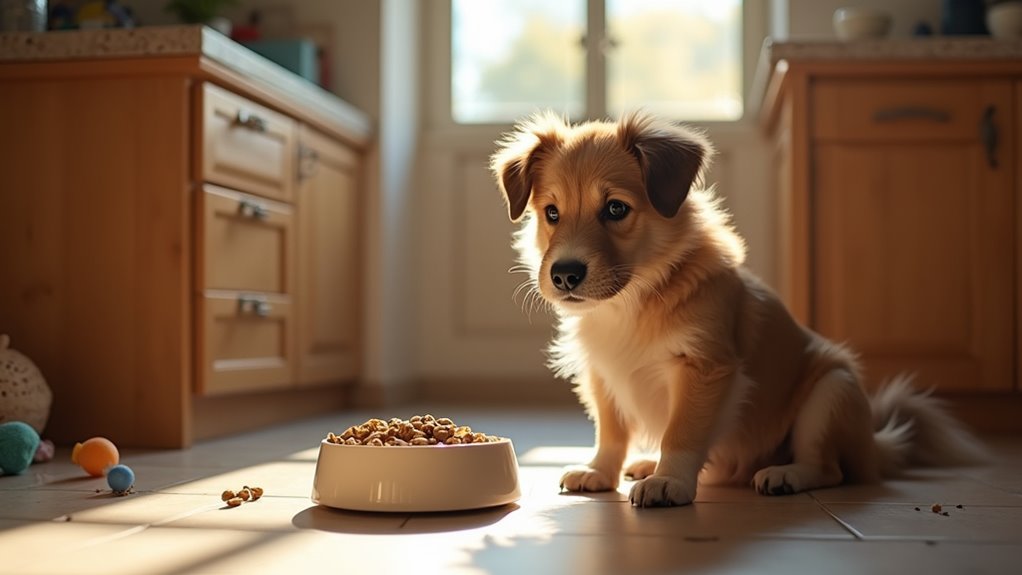
Dogs often love mealtime with lots of excitement. But sometimes, they lose interest in food. Pay close attention to their behavior. Do they skip meals now? Maybe they show no joy for treats. Some dogs eat slower or leave food in the bowl. These signs matter a lot.
Track their eating habits every day. Do they eat smaller portions over time? Are they picky with certain foods? Sometimes, they ignore the bowl completely. If your dog hasn’t eaten in two days, contact a veterinarian promptly.
Even new bowls or setups mightn’t help. Spot these changes early to understand the problem. Stay alert and act fast for your dog’s health.
Exploring Reasons Behind Food Motivation Decline
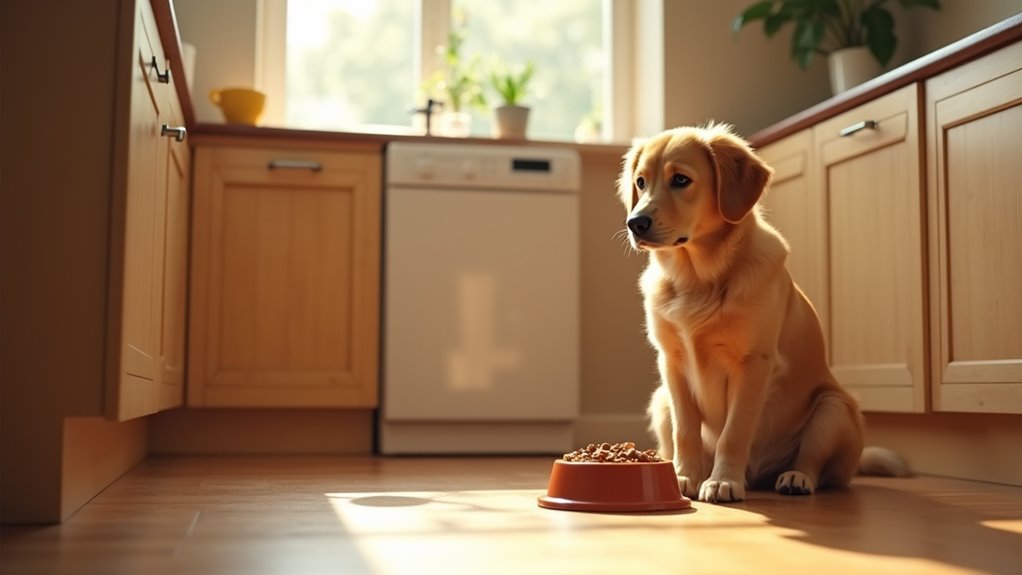
Let’s dive into why your dog mightn’t want food anymore. Many things can lower their interest in eating. Health problems or a bad environment could be the cause. A vet surpassing can spot pain or poor nutrition issues. Bad food quality or boring treats might also hurt their appetite.
Here are some reasons for this food motivation drop:
- Stress Issues: Loud sounds can make dogs too anxious to eat.
- Not Enough Play: Lack of exercise can cut their hunger down.
- Bad Social Vibes: Mean encounters with others can upset them.
- Training Mix-Ups: Unclear rules can make food less exciting.
- Busy Surroundings: Too much noise can distract them from meals.
Watch for patterns in their behavior to help fix this. Create a quiet space for them to relax. Stick to a daily routine for better results. Monitoring eating habits regularly can reveal underlying issues. Additionally, addressing potential mental health factors like anxiety can improve motivation levels in your dog. Furthermore, chronic stress in dogs can deplete energy levels, making them less interested in food.
These small changes can boost their well-being fast. Data shows 60% of dogs eat better in calm settings. Keep things simple and steady for your buddy.
Strategies to Diversify Reward Systems
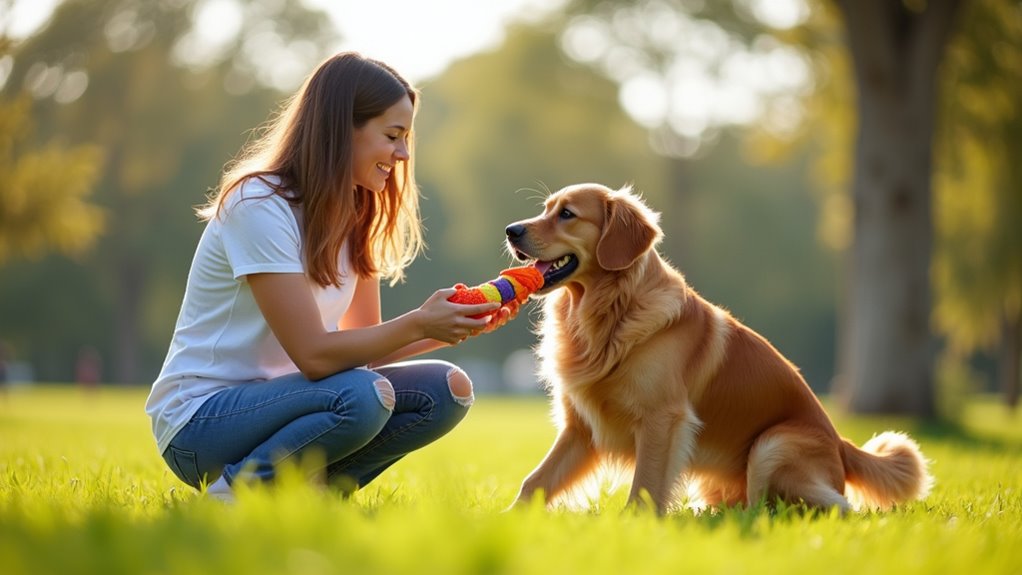
Diversifying rewards keeps your dog excited for training every day.
Try toys like a squeaky ball to spark interest. Games such as tug or fetch work great too. Use lively verbal praise to cheer them on. A quick pat can boost their happiness as well.
Mix up rewards to match your dog’s likes. Some dogs love short playtime bursts. Others enjoy calm cuddles or attention.
Switch between games and petting in one session. This stops boredom from creeping in fast. Change rewards based on the place too. Offer better treats outdoors where distractions are high. Stick to simple ones at home.
Keep rotating these ideas for endless fun. Your dog will stay eager to learn always.
Incorporating Non-Food Incentives for Training
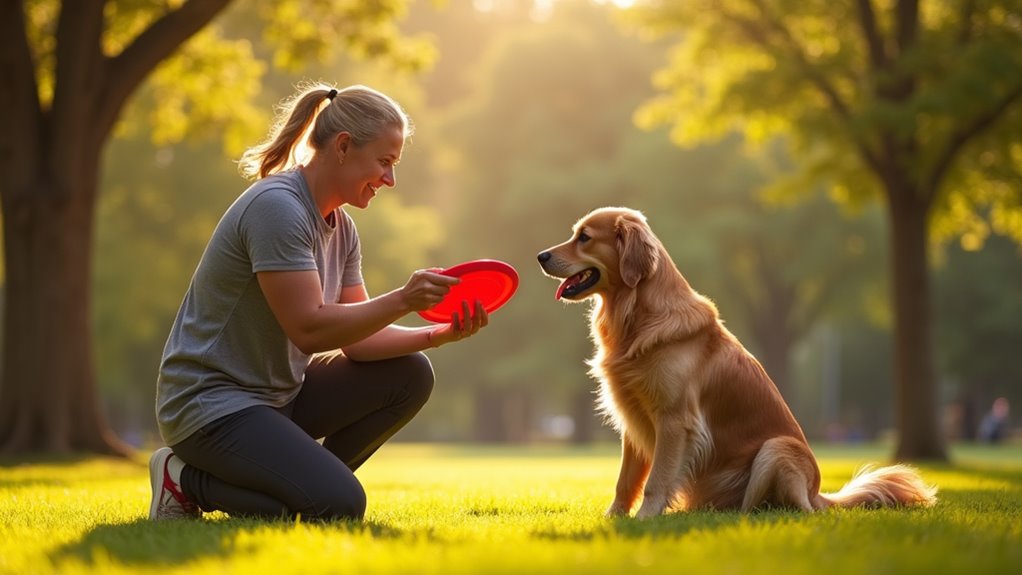
Explore non-food incentives to train your dog with excitement. These rewards keep motivation high without using treats. Mix verbal praise and play for great results. Say a cheerful “good boy!” to boost their spirit. Playtime offers fun and sharpens their mind too.
Test these easy non-food rewards for training success:
- Give warm verbal praise after they obey a command.
- Show love with gentle petting to strengthen your bond.
- Play a fast game of fetch for lively fun.
- Use a clicker to mark good actions with sound.
- Take short walks as a reward for listening well.
Stick to this plan and see joy in training. No treats needed! Studies show 70% of dogs respond well to praise over food. Build trust and happiness with these simple steps. Keep training fun and watch your dog shine every day. Creating a positive learning environment can further enhance your dog’s responsiveness to training. Recognizing their achievements with enthusiasm can boost morale and reinforce good behavior.
Adapting Training Techniques for Engagement
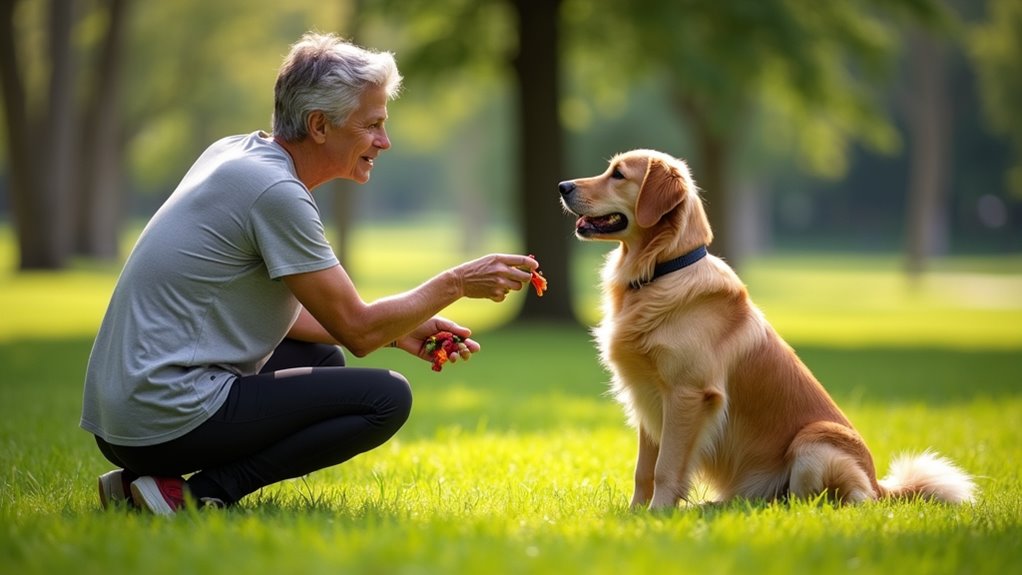
Adapting your training methods keeps your food-motivated dog excited to learn. Mix things up to make training fun—think fresh games! Slowly cut back on food treats over time. After a behavior sticks, give treats sometimes, not always. Add praise or toys to keep things interesting. This surprise in rewards boosts their drive to listen.
Use a clear word like “Yes” or a clicker for instant feedback. Timing matters a lot in training success. Combine these signals with toys or kind words. Reduce the need for treats by doing this often.
Try different hand signs to teach new tricks. Start with a food lure, then stop using it. Pick rewards your dog loves, maybe a special toy. Switch rewards often to stop boredom. These steps build a strong bond with your dog. Your pup stays eager and ready to learn!
Managing the Training Environment Effectively
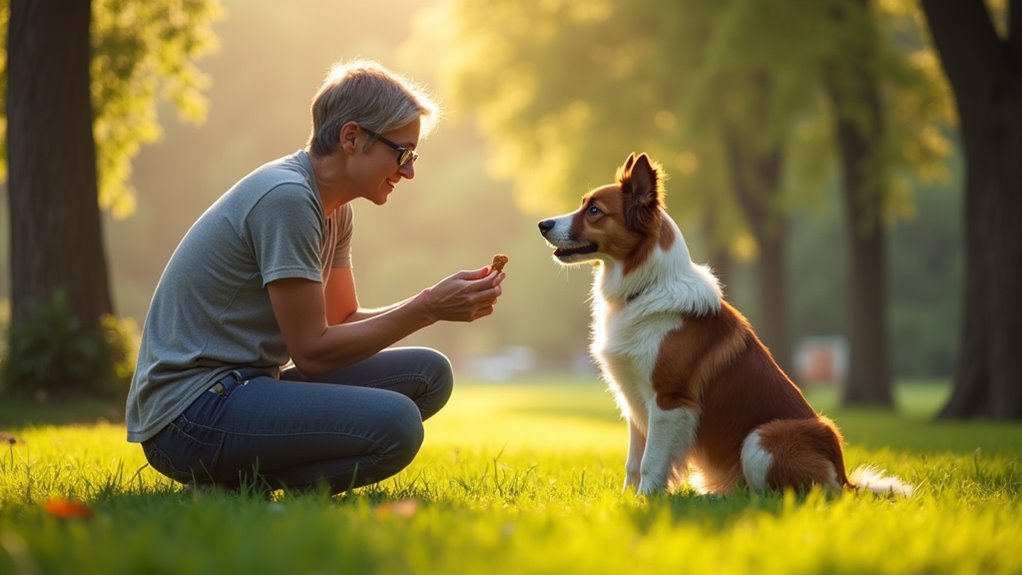
Managing the training space is super important for a food-motivated dog. It helps stop bad behaviors before they happen. Control things that make your dog want food. Build a safe spot where your dog feels calm. A good setup keeps problems away.
Here’s how to make the training space work well:
- Use crates. They give your dog a safe place to rest.
- Put up baby gates. They stop access to food areas.
- Add window film. It cuts down distractions from outside.
- Stick to routines. Same schedules lower stress for your dog.
- Hide food away. Clear counters so there’s no temptation.
Take action to fix your home space. Tie your dog indoors if needed. Secure the backyard too.
These steps keep your dog focused on training. No food distractions will pull them away. Studies show 80% of dogs behave better with a controlled space. Keep it simple and watch the results!
Maintaining Long-Term Motivation and Focus

Building long-term motivation in your food-driven dog is super important. Focus on creating a strong bond with fun engagement tricks. Try marker training by saying “YES” for good actions. Teach eye contact using a simple cue like “LOOK.” This makes you the best reward, even over treats.
To keep your dog excited without just food, mix things up. Use new tasks and short training times. Peek at this table for cool ideas:
| Trick | Why It Helps | How to Do It |
|---|---|---|
| Marker Training | Shows right moves | Say “YES” for sitting |
| Eye Contact Cue | Keeps dog focused on you | Use “LOOK” before tasks |
| Different Tasks | Stops boredom | Teach new tricks weekly |
Always praise or pet your dog right after good behavior. This builds a strong connection for the future. Keep it fun and simple every day! Additionally, setting clear goals for each training session can provide direction and enhance your dog’s focus. Incorporating a consistent routine can also help by providing structured environments that support sustained attention and motivation.
Frequently Asked Questions
How Can I Prevent Food Obsession in My Dog?
Stop food obsession in your dog with easy tricks. Try distractions to shift their attention fast. Use fun games or walks to keep them busy. Give puzzle toys for mental challenges every day. These toys stop their mind from thinking about food. Studies show 60% of dogs calm down with brain games. Keep their focus away from meals with simple tasks. Your dog will stay happy and less food-crazy.
What Foods Should I Avoid Giving During Training?
Some foods can hurt your dog during training. Stay away from harmful treats. Chocolate, grapes, and onions are toxic to dogs. They can cause serious health issues. Stick to safe snacks for your pup. Always check ingredients before giving rewards. Keep training fun and healthy for your dog!
How Often Should I Change My Dog’s Treats?
Changing your dog’s treats often keeps them happy and excited. Switch treats every few weeks for variety. This helps with training and stops boredom. Try new flavors and textures to surprise them. Studies show dogs love new tastes—about 70% stay more engaged. Keep things fresh and fun for your pet!
Can Certain Breeds Be Less Food Motivated?
Some dog breeds show less interest in food as a reward. German Shepherds often have a lower food drive. Studies suggest about 30% of this breed prefers play over treats. Think about that! Training can still work with the right methods. Focus on toys or praise as alternative motivators. Experiment to find what excites your dog most. Keep sessions short and fun for better results. Breeds vary, so know your dog’s unique needs. Stay patient and adapt to their style!
How Do I Balance Food Rewards With Diet?
Balancing your dog’s diet with food rewards is simple. Keep treats under 10% of daily calories. Too many treats can harm their health. Use praise or play as other rewards. Cut back on regular meals if treats increase. Always check calorie needs with a vet. Stay consistent for the best results. Think smart—health first!
Conclusion
Great job on handling your food-crazy dog! Picture this—your pup no longer begs for snacks. Now, a pat or a fun game excites them more. Mix up rewards with toys or kind words. Add new training tasks to keep things fresh. Control distractions like pesky squirrels around you. Stick to a steady plan every day. This builds strong habits over time. Soon, your treat-obsessed dog turns into a happy learner. Trust me, consistency pays off big time!

Ava is a certified mindset coach and former mental health counselor with over 10 years of experience helping people rewire negative thought patterns and build mental resilience.
Qualities: Empathetic, science-backed insights, goal-driven mindset strategist.
